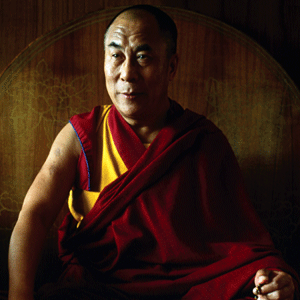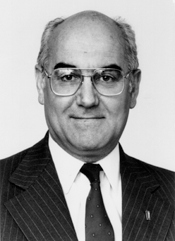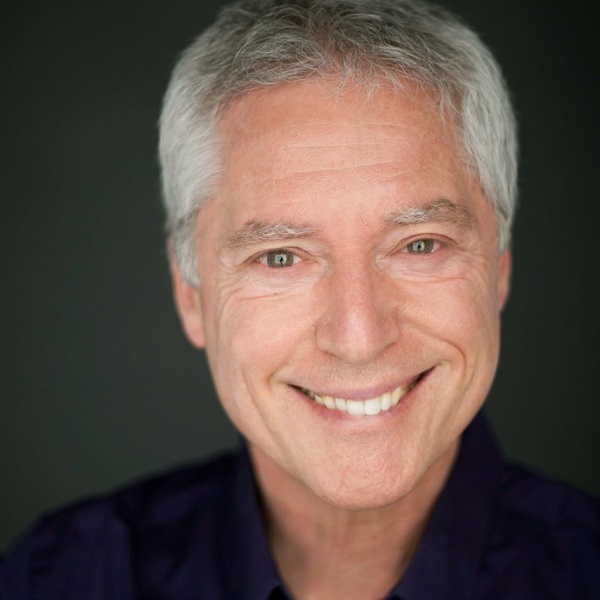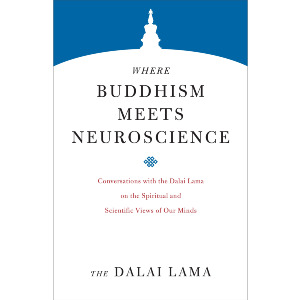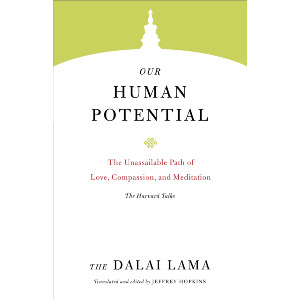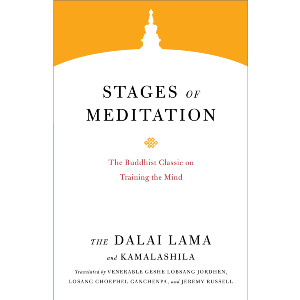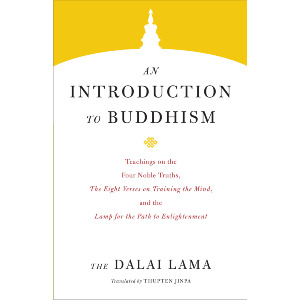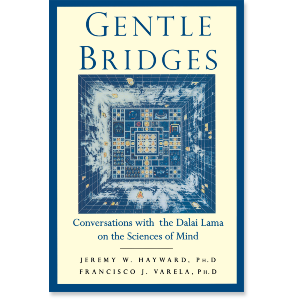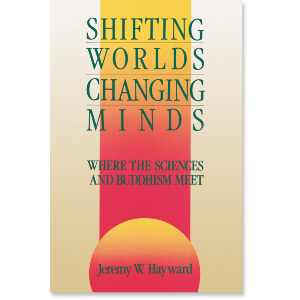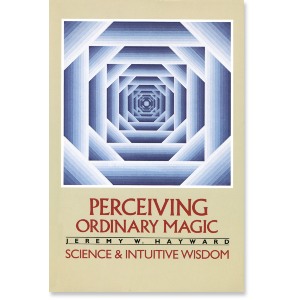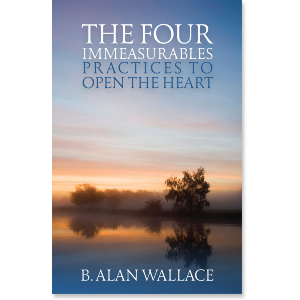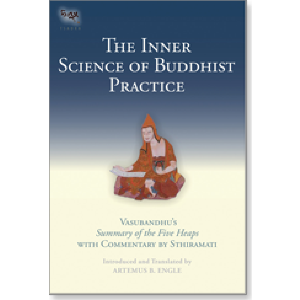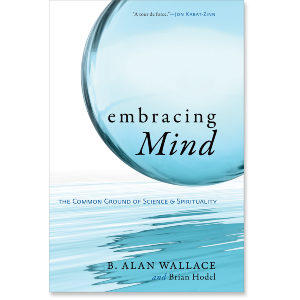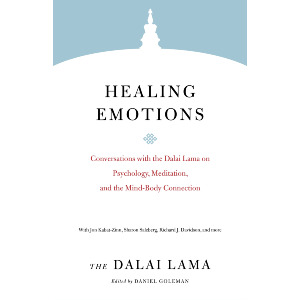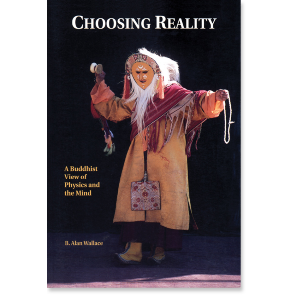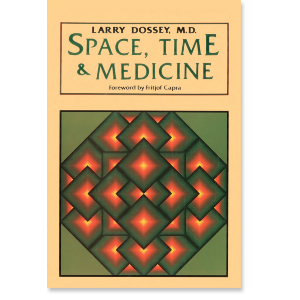| The following article is from the Spring, 1988 issue of the Snow Lion Newsletter and is for historical reference only. You can see this in context of the original newsletter here. |
Mind and Life Conference:
Dialogues between
Buddhism and the Cognitive Sciences
DHARAMSALA 1987
In late October, 1987, five Western scientists met for a week with His Holiness Tenzin Gyatso, the Fourteenth Dalai Lama of Tibet. This gathering was inspired by a shared interest in establishing a dialogue between Buddhist thought and cognitive science which can illuminate these rich and distinct modes of exploring mind and life.
The discussions took place in the meeting room of His Holiness the Dalai Lama in Dharamsala, India. They were styled not as a conference or a debate, but in an atmosphere of a living room conversation. Some sessions are structured as presentations on specific topics, with questions and answers aimed at clarification. Other sessions are designed as free flowing discussions with designated themes.
Discussion topics and experts included:
- Perception and the Brain and on Life and its Material Basis - Dr. Varela, a neurobiologist
- Scientific Method and Validation - Dr. Jeremy Hayward of Naropa Institute
- Cognitive Science - Dr. Eleanor Rosch of the University of California, Berkeley
- Artificial Intelligence - Dr. Newcomb Greenleaf of Columbia University
- Development of the Brain - Dr. Robert B. Livingston of the University of California, San Diego
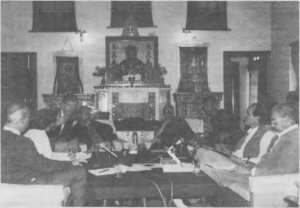
Left to right: Jeremy Hayward, Eleanor Rosch, Alan Wallace, Francisco Varela, H.H. the Dalai Lama, Thubten Jinpa, Newcomb Greenleaf, and Robert Livingston
Background:
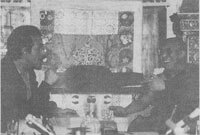
Francisco Varela and H.H. the Dalai Lama
The idea of such a conference was born more than three years ago. It was brought to fruition by a committee chaired by Adam Engle of the Vajrapani Institute, Boulder Creek, California, under the scientific coordination of Dr. Francisco Varela of the Ecole Poly-technique in Paris. Michael Sautman of Berkeley, California was the third member of the committee. Earlier plans were more modest, but His Holiness had insisted that the meeting last for a full week and that it take place in Dharamsala, where he would be able to devote himself to it intensively.
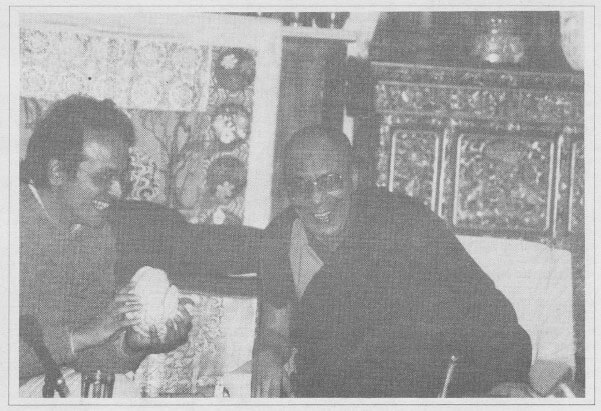
Francisco Varela and H.H. the Dalai Lama
The goal of a 1 living room conversation was very closely realized. There were virtually no spectators, except for the organizing committee and the film crew. The six participants sat around a low table, with His Holiness and a scientific presentor at the head, flanked by two translators, a Tibetan and an American, who played a vital role in the proceedings.
Translators:
The Venerable Thubten Jinpa is a young monk and scholar of Buddhist epistomology and logic at Shartse College of Ganden University. He is one of the principal interpreters for His Holiness.
The other translator, B. Alan Wallace, has been a student of His Holiness since 1970 and was for many years a monk. Recently he returned to Western academia at Amherst College, where he studied the philosophical foundations of modern physics in light of Buddhist philosophy. He is currently the spiritual director of the Dharma Friendship Foundation in Seattle, Washington.
While His Holiness has a good command of English, a variety of technical terms from Buddhism and science required particular care in translation, and the expertise of the translators proved invaluable. At times they engaged in extended discourse in Tibetan with His Holiness and the two scholars who attended him, Geshe Yeshi Thapkay of the Institute of Tibetan Studies, Sarnath, and Geshe Palden Dakpa of Tibet House, Delhi.
Program of official sessions:
Mornings were devoted to presentations by the cognitive scientists. They were distinguished by the extremely close attention paid by His Holiness and by the acuity of his scientific intuition. Time and again he would anticipate the flow of logic or experiment.
The afternoon discussions ranged over many topics, but a common thread was an ongoing presentation by His Holiness of Buddhism as validated knowledge, hence as a form of science.
Two small episodes which made big impressions...
Rather than attempt to survey the vast array of ideas which were presented, I shall present two small episodes which made big impressions. The first concerns computers and reincarnation, and the second deals with the identity of a person who has received a heart or brain transplant.
Computers and reincarnation:
During my presentation on artificial intelligence, I recounted the belief of many scientists that, as computers become bigger, faster, and more complex, they will also get smarter, so that eventually they will be regarded as sentient beings. I then asked His Holiness if he thought it possible that this might occur through beings choosing to reincarnate within suitable computers.
We were presented with a vision of the relationship between evolution and reincarnation.
His Holiness discussed this question at some length with Geshe Thapkay and Geshe Dakpa. He finally reported to us that, while many might reject the suggestion as absurd, he did not. Reincarnation can take place whenever the material basis is suitable. We cannot reject the possibility that at some point a computer might be a suitable basis. His Holiness then turned to me and said,
"Should this happen, it will probably involve people such as you, who are very close to their machines."
The importance of this remark was quite vast. We were presented with a vision of the relationship between evolution and reincarnation. Evolution might proceed mechanically until a suitable material basis for reincarnation is produced, at which point its beings would be enlivened by sentience and the course of evolution profoundly effected.
How is the identity of a person who has received a heart or brain transplant affected?
The discussion of transplants occurred late one afternoon when Dr. Livingston asked His Holiness about the identity of someone who has had a transplant. The first question involved actual operations.
Suppose that Alice dies and her heart, in good condition, is transplanted to Bob, who is healthy except for his heart. This combination of Alice's heart with the rest of Bob, is it Alice or Bob? His Holiness replied, to everyone's satisfaction, that it is Bob.
Then Dr. Livingston posed the same question with respect to a hypothetical operation, which might be possible someday, in which Alice's brain is transplanted into Bob. This creature, Alice's brain in Bob's body, is it Bob or Alice?
His Holiness went on to explain that Buddhism sees the identity of the individual as centered within the breast, near to but not in the heart. Bob might have some difficulty adjusting to Alice's brain, but would still be Bob.
we were shown other ways that things might be seen, and provoked to think of an experiment which could confirm or deny.
As happened so often during the meetings, we were shown other ways that things might be seen, and provoked to think of an experiment which could confirm or deny. At the conclusion of the meetings, both the Dalai Lama and the scientific participants expressed the hope that further dialogues should take place, both for the benefit of the Tibetan people and of the West.
Personal Reflection on the Journey to Dharamsala:
Let me give a more personal account of our journey and stay in Dharamsala.
As the day of departure approached, the news was dominated by reports from Tibet of the protests against the Chinese occupation. I doubted that His Holiness would be able to take a week for such relatively esoteric matters. These fears proved unfounded, the meetings went on as scheduled, and His Holiness participated intensely in all sessions, five hours a day.
It is not easy to get to Dharamsala, which is located in the foothills of the northern Himalayas. After the flight to Delhi, arriving in the wee hours, there is an overnight train ride to Pathankot and then a terrifying, breakneck, three hour taxi ride up into the hills. We were shepherded throughout the trip by Adam Engle, and in Delhi by the agency Middle Path Travel, who formerly arranged only the passages of the Dalai Lama.
What a relief to arrive at Kashmir Cottage, a guest house run by Tenzin Choegyal, the gracious younger brother of the Dalai Lama, and to experience the warmth of Tibetan hospitality. We felt at home from the start, even as we overfilled the accommodations so that the dining room was turned into a bedroom and dining was moved to the patio. Fortunately the weather was perfect, with the sun breaking the night chill just in time for breakfast.
Kashmir Cottage is perched on the side of a very steep hill, with the view from the patio over the center of Dharamsala and across the plains. There we took all our meals, which were delicious and plentiful, and there we tended to linger over tea. The patio became the locus for an extension of the dialogue, between Buddhism and science and for a somewhat separate dialogue between American Kagyupas and American Gelugpas.
The patio became the locus for an extension of the dialogue, between Buddhism and science and for a somewhat separate dialogue between American Kagyupas and American Gelugpas.
Four of the participants were students of the Vidyadhara, Chogyam Trungpa, Rinpoche. Alan Wallace and Adam Engle were the resident Gelugpas.
Frequently they were joined by Michael Sautman and by John Avedon, author of In Exile from the Land of the Snows, who is currently writing a book about a Nobel Prize neurophysiologist. Several times Thubten Jinpa had lunch with us and then conversation turned to logic and to Oxford, where he plans to study.
The compound of His Holiness was a short but very steep climb above the cottage. Sometimes we would walk down, but we always went up in jeeps that were sent for us. The roads were steep, winding and narrow, often skirting the edge of a large drop off, but the drivers, most of whom were monks, were, unlike our taxi drivers, cautious and skillful.
The compound is the seat of the Tibetan Government in exile and is adjacent to a monastery with a large temple under construction. It commands a magnificent view of the snowy peaks above, themselves mere foothills by Himalayan standards.
Beyond the compound lies the village of MacLeod Ganj, once the summer residence of the British Governor General, and now a tiny Tibetan enclave.
While very poor, the village is fall of zest and cheer. Within it, monks and lay people often carried malas and did their practice as they walked about. The sight of this integration of spiritual and secular was very moving. I began to yearn for a more extended visit to a Tibetan community.
For more information:
The event will be videotaped in full; copies of the tapes will be made available to the Tibetan Government for use in their schools and monasteries, and to the Western public for use in furthering understanding. Edited versions will be prepared for more abbreviated viewing, for transcription into books or articles and perhaps for broadcast.


